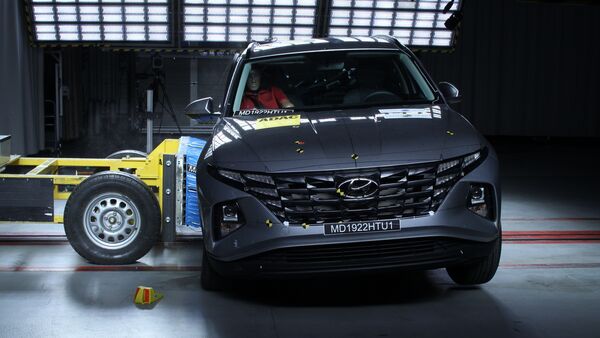- Hyundai has discontinued the Tucson in India, highlighting why mass-market premium SUVs continue to struggle against the Toyota Fortuner’s trust, scale, and presence.

View Personalised Offers on
Hyundai has officially discontinued the Tucson in India, signalling the challenges that mass-market automakers face in competing with the Toyota Fortuner in the premium SUV segment. Despite offering modern features, a powerful diesel engine, and advanced safety tech, the Tucson struggled to gain traction in a space where Toyota is dominant.


Launched in 2022, the fourth-generation Hyundai Tucson was priced between ₹27.7 lakh and ₹34.4 lakh (ex-showroom). It came with a 2.0-litre petrol engine producing 153 bhp and a 2.0-litre diesel motor delivering 183 bhp, paired with automatic gearboxes and an all-wheel-drive option for the diesel variant.
However, despite strong specifications and a long feature list, including Level 2 ADAS, a panoramic sunroof, dual 10.25-inch displays, and ventilated seats, the SUV managed limited sales. Industry data indicates Hyundai sold fewer than 4,000 units of the Tucson in 2023, with figures falling further in 2024. With no direct replacement lined up, production has now officially ceased.
| Specifications Comparison | Hyundai Tucson | Toyota Fortuner |
|---|---|---|
| Engine | 1997.0 to 1999.0 cc | 2694.0 to 2755.0 cc |
| Transmission | Automatic | Manual & Automatic |
| Mileage | N/A | N/A |
| Fuel Type | Petrol,Diesel | Petrol,Diesel,Hybrid (Electric + Diesel) |
Here are a few reasons why some premium SUVs from mass-market brands are unable to overtake the Toyota Fortuner:
1. Brand perception and resale value
Indian buyers spending above ₹30 lakh tend to associate the price with a premium badge or proven durability. While Hyundai is highly trusted in the mass-market space, Toyota’s Fortuner carries a rugged, “go-anywhere” reputation and consistently holds one of the strongest resale values in the premium SUV segment. The Toyota badge is also well known for its reliable engine across the globe.
2. Segment expectations: size and road presence
At a similar price, the Fortuner offers a full-size seven-seat layout and a tall, ladder-frame stance that appeals to buyers seeking status and road dominance. The Tucson, built on a monocoque chassis and available only as a five-seater, was perceived as smaller than a full SUV, limiting its aspirational pull.
3. Limited localisation and higher costs
The Tucson was imported as a CKD (Completely Knocked Down) unit, which increased costs and restricted Hyundai’s ability to price it aggressively. The Fortuner, though, is assembled in India, benefiting from Toyota’s established supply chain and localisation strategy. This helps it sustain margins and extend better after-sales support.
4. Service reach and ownership economics
Toyota’s extensive dealer network and low long-term maintenance costs further cement its dominance. In contrast, premium Hyundai models such as the Tucson cater to a niche audience and face higher maintenance costs, especially in smaller cities where service support for such models is limited.
The bigger picture: India’s shrinking premium SUV space
The ₹30–40 lakh SUV segment itself has narrowed. According to industry data, sales of large SUVs have dropped nearly 18 per cent this fiscal year as buyers shift toward feature-rich midsize SUVs and MPVs offering better practicality and efficiency. In this environment, Toyota’s brand strength and product identity give it an edge that others struggle to match.
Hyundai’s decision to end Tucson production leaves a gap in its portfolio above the Alcazar. While Hyundai is focusing on EVs, recent reports suggest it plans to launch its luxury arm, Genesis, in India by 2026 with premium models. This move could mark Hyundai’s renewed attempt to capture aspirational buyers who have traditionally gravitated toward brands like Toyota, BMW, and Mercedes-Benz.
Check out Upcoming Cars in India 2025, Best SUVs in India.
First Published Date: 12 Nov 2025, 19:46 pm IST

